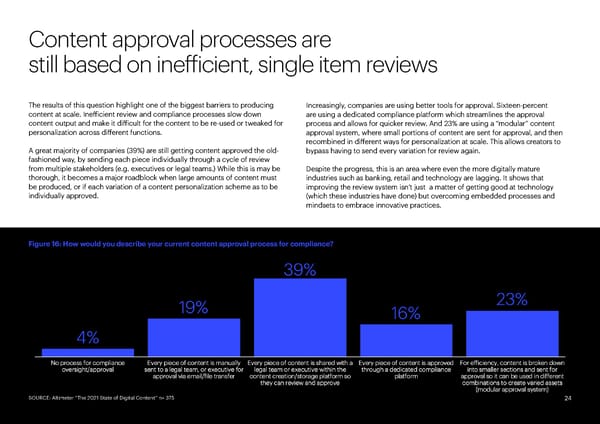Content approval processes are still based on inefficient, single item reviews The results of this question highlight one of the biggest barriers to producing Increasingly, companies are using better tools for approval. Sixteen-percent content at scale. Inefficient review and compliance processes slow down are using a dedicated compliance platform which streamlines the approval content output and make it difficult for the content to be re-used or tweaked for process and allows for quicker review. And 23% are using a “modular” content personalization across different functions. approval system, where small portions of content are sent for approval, and then recombined in different ways for personalization at scale. This allows creators to A great majority of companies (39%) are still getting content approved the old- bypass having to send every variation for review again. fashioned way, by sending each piece individually through a cycle of review from multiple stakeholders (e.g. executives or legal teams.) While this is may be Despite the progress, this is an area where even the more digitally mature thorough, it becomes a major roadblock when large amounts of content must industries such as banking, retail and technology are lagging. It shows that be produced, or if each variation of a content personalization scheme as to be improving the review system isn’t just a matter of getting good at technology individually approved. (which these industries have done) but overcoming embedded processes and mindsets to embrace innovative practices. Figure 16: How would you describe your current content approval process for compliance? SOURCE: Altimeter “The 2021 State of Digital Content” n= 375 24
 State of Digital Content Page 23 Page 25
State of Digital Content Page 23 Page 25